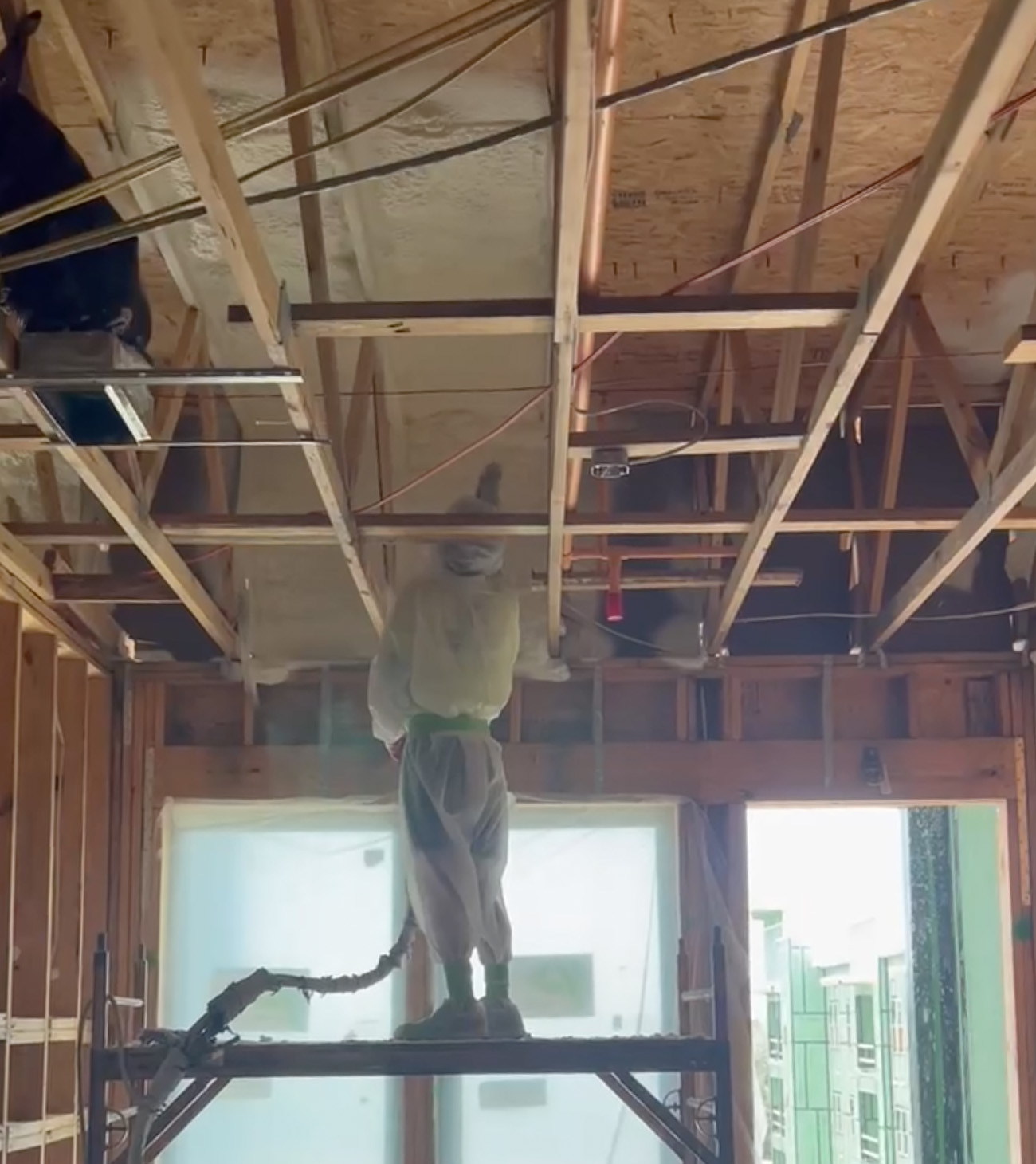SPRAY FOAM
INSULATION QUESTIONS
Here are a few of the questions that homeowners ask us regularly. If your question is not listed here, please feel free to use the Contact Us page. We will respond back to you in a prompt manner.
- Do your products contain Urea Formaldehyde? – No. Our spray foam contains no urea formaldehyde. They are completely safe for your family.
- Will open cell foam absorb water in the event of a leak? – Yes, open cell will absorb water, but the water will migrate out onto the ceiling. Once the leak is repaired, the open cell foam will dry itself out with no need of replacement.
- Will spray foam change physically over time? – No. Once the spray foam reaction is complete, you are left with an inert cellular plastic. Spray foam insulation will not shrink, settle, or sag.
- My new structure has metal studs. Will the spray foam corrode the metal over time? – No. Spray foam insulation is neither acidic nor alkaline, and it is non-corrosive.
- Does open cell trap moisture? – No. Open cell is considered ”breathing” foam. Any moisture in the concrete or wood can escape through the insulation as the building dries out, thus eliminating any risk of mold or mildew.
- Is spray foam insulation flammable? – Spray foam insulation is not any more flammable than most products used to build your structure.
- What are the R-Values of your spray foam insulation? – Open cell is 3.81 per inch. Closed cell is 6.6 per inch.
- What about mold? Will mold grow in the spray foam insulation? – Mold requires three items in order to grow. 1.) Moisture, 2.) Warm Temperatures and 3.) A food source. Spray foam has no food value, it eliminates condensing surfaces, and it reduces the potential for moisture accumulation. Spray foam insulation also eliminates air movement within the wall cavity that could bring in moisture.


9. Does closed cell provide any structural value? – Yes. A roof system with closed cell spray foam insulation does exhibit superior racking strength.
10. Does closed cell show roof leaks? – No. Properly sprayed closed cell insulation will not allow water to intrude into the interior space of the roof.
11. What is the difference between Thermal Barrier and Ignition Barrier? – The terms Thermal Barrier and Ignition Barrier often get confused. We dedicate the next few paragraphs to trying to simplify this for you. One way we have to differentiate this for you is to use what we call the jacket scenario. Let us say you have two jackets one that is fireproof and one that is just a heavy material like a common jacket. If you put your regular jacket into an open flame, it would probably catch flame where as if you had the fireproof one it would not. If you were standing next to a flame and a spark came out the regular jacket would probably not burn. Your regular jacket would be an ignition barrier or spark protector and the fireproof jacket would be a thermal barrier or flame proof.
12. Little history about foam spray – Otto Bayer is largely considered the father of polyurethane foam. He began his work with polyurethane polymers in Germany in about 1937. His work was brought to the United States by David Eynon, president of Mobay for further development. Mobay was a combination of two large chemical companies Monsanto and Bayer. Polyurethane foam comes in two different forms, determined by their chemical makeup. These forms are Open Cell and Closed Cell. Throughout the industry, several other terms have been attributed to spray foam. For example, open cell foam is sometimes called half-pound foam or semi rigid foam. Closed cell foam on the other hand is commonly called two-pound foam or rigid foam. Polyurethane foam is used in a variety of applications ranging from seat cushions in automobiles and furniture, to protection of valuables during shipping and insulation in our homes.
